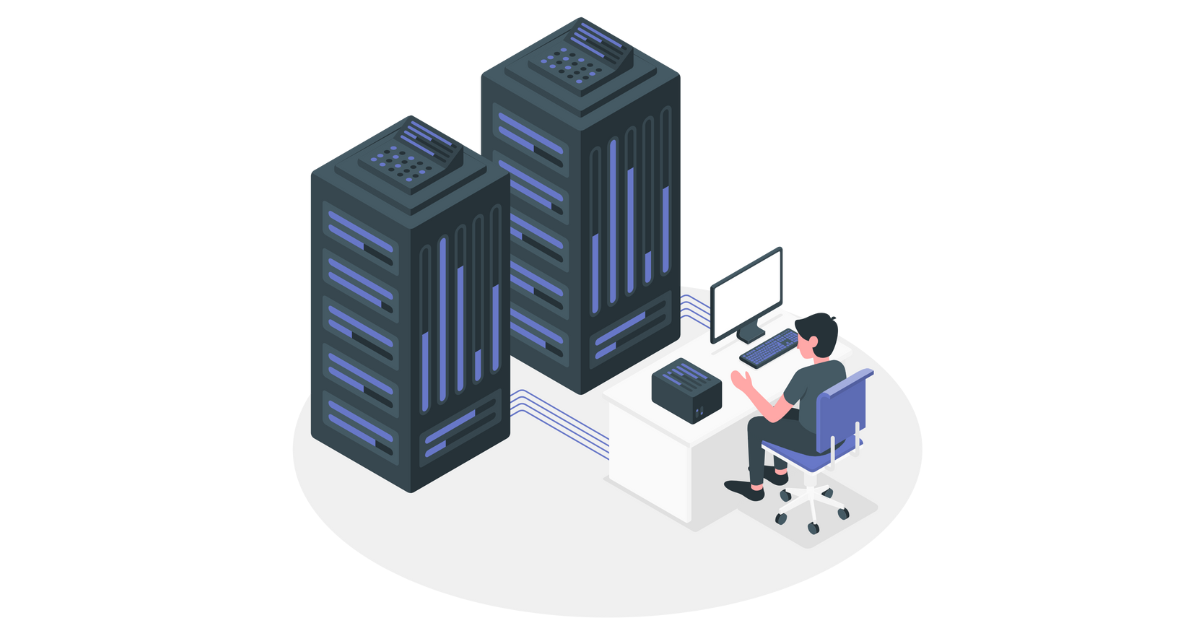Containers: What Are They and How Can They Benefit Your Business?

While Containers and OpenShift may seem complex and daunting at first, there’s no need to be intimidated by these powerful tools.
In fact, businesses of all sizes can benefit from leveraging these cutting-edge technologies to streamline their application development and deployment processes.
Containers are lightweight and portable, allowing applications to run consistently across different environments, with their dependencies and configurations. They offer a way to encapsulate an application and its dependencies into a single, self-contained unit that can run anywhere, from a developer’s laptop to a production server.
OpenShift, on the other hand, is a container application platform that provides a complete container solution based on Kubernetes. OpenShift allows developers to build, deploy, and manage containerized applications with ease, while also providing enterprise-grade security, scalability, and reliability.
Watch the video
In episode 2 of our video series with Darryl from TD SYNNEX, ‘Open Minds Think Alike’, our Container Platform Consultant Jonathan shares his expertise around containers, explaining what they are, and how they can benefit your business.
To catch up on Episode 1 of Open Minds Think Alike: What even is Kubernetes?!, visit Kubernetes: What is it, why is it used, and what can it do for me?’
Containers and Tier 2
Our team of Container and OpenShift specialists help organisations utilise containers, with agile and DevOps processes, to modernise their applications, develop new cloud-native applications, and accelerate application delivery. Find out more about Tier 2’s accredited Red Hat OpenShift Container Platform skills, and how we can help you:
- Design, install and configure your OpenShift environment
- Onboard OpenShift Dedicated customers
- Set-up CI/CD pipelines
- Application modernisation to benefit from containers and cloud-native architectures
Open Minds Think Alike: Why are People Using Containers?
In the following video transcript, we present the discussion between Jonathan and Darryl, who delve into various topics and answer questions such as:
- What is Kubernetes?
- What are containers and how are they used?
- What are the main benefits?
- How do containers work with DevOps and continuous integration/deployment (CI/CD)?
- What are some common challenges and considerations?
- How can businesses manage and monitor their container environments?
- How is the container and Kubernetes ecosystem evolving, and what new developments should businesses be aware of?
- How do different container platforms such as Docker, Podman, Kubernetes, and OpenShift ensure compatibility with each other?
Video transcript:
Darryl [00:00:05]
Hello and welcome to episode two of Open Minds Think Alike, where we talk to experts from across the open source community, about their areas of expertise to help you make the right decision about open source software.
We’re joined again this time by Jonathan, to continue our discussion on all things containers and Kubernetes. So last time Jonathan, we spoke about choosing a flavour of Kubernetes.
I want to spend a bit of time talking about where businesses are right now. So, maybe a good place to start is in your experience, how are most businesses thinking about containers, and how are they using them?
Jonathan [00:00:59]
Sure. I mean, containers are just one component in a bigger picture, and a lot of people are using Kubernetes maybe in a public cloud, but a lot of smaller businesses in particular are using Docker as standalone containers without the orchestration layer. And I think that gets overlooked quite a lot, but it is still a really important thing to understand.
There’s two kind of real usage models I’ve noticed for Docker containers on their own. One of them is a company; it’s developers have built an application in-house and they’ve packaged it as a docker container because it makes it nice and distributable and they’re running it just, you know [docker run, tap, tap, tap], off], it goes nice and easy.
The other model we tend to find is that there’s a huge library of Docker containers available for free online. So if you need to say, run a database or a Redis cCache or something like that, you can just get the image and run it straight away. No need to install or set up. So it’s actually a really easy way of obtaining open source applications to run as a dependency of your own project.
Darryl [00:02:10]
Presumably people are doing that and they’re getting to some kind of scale at some point where they need to look at something like, Kubernetes. So I mean, they’re clearly doing this. There’s clearly a benefit to running in containers, can you talk more about what is it that they’re getting out of it?
Jonathan [00:02:33]
Yes, one of the key wins with containers is the ease of packaging and distribution. So typically when you have a complex app, it’s got all sorts of dependencies and they might be Python modules you need or Ruby Gems or all sorts of different things.
With the container image, the developers will build that as a self-contained image that contains all the dependencies and everything the app needs to run. Which means then that running it is a much easier thing because you just run it.
You can sort of think of containers a little bit like smartphone apps, where you get the app from the app store and it just works. You don’t need to install it as such. So there are huge wins for distributing software, running software and simplifying your production using containers.
Darryl [00:03:24]
And, presumably, that faster approach has benefits when it comes to approaches like DevOps as well. Are you able to talk a bit more about that, that kind of approach, and how it works with containers?
Jonathan [00:03:39]
Yeah, I mean, DevOps is one of those words that no one seems to really know what it means. Everyone’s got their own interpretation of it. But for me, the kind of core principle of DevOps is automating everything that you can, to simplify the chores and make your operations slicker.
So a key part of DevOps I would say is continuous integration; CI, or continuous deployment, which is CD. You can imagine if you’re working on your app, you change the code, you save your code, and then an automated pipeline will test what you’ve done. If it passes the tests, it’ll build it into an image, it can publish the image, and then it can start running the image.
So you can automate the whole thing from developers to production. Which does mean you can publish things a lot more frequently and a lot more quickly to get them in production, kind of move fast, iterate quickly to get your features and your fixes out there in the real world as quickly as possible.
Darryl [00:04:42]
So, okay, massively speeds up production and development then, because your developer can sit and write his application and it’ll all be automated and pushed out to the application via container. That’s really, really cool.
Another question that a lot of people have at the moment as well is concerned about compatibility between OpenShift and the other container platforms out there. There’s names like Docker – if you are one of those organisations that’s downloaded some Docker containers to get those immediate benefits, how does it work?
Can you use that with something else?
Jonathan [00:05:38]
Yeah, I mean, people tend to call them Docker containers, but they’re actually just containers. Docker is one of many tools that can run the containers. There’s also Podman, Kubernetes, OpenShift, and all sorts of different things like that.
But the container is a pretty much universal format. So any effort you can put into containerizing, your app is never wasted because you can always use it later on down the line. I think it’s worthwhile thinking about the architecture of your application and how well it will suits containerization.
Containers work best if your app can be broken up into logical chunks where each chunk does one thing and one thing equals one container. So overall, your app might be built out to several containers that work together.
Darryl [00:06:30]
That’s super interesting. I think we’re coming up on our time limit, but just one more question. This is clearly a subject that you are very, very knowledgeable on.
If people have got questions and they’re stuck at this point where they’ve got some containers and they don’t know where to go next, or how to get the most out of it, how can they get in touch with you to find out more?
Jonathan [00:06:59]
For all your questions about containers and Kubernetes that you’re too afraid to ask, you can always drop us a line at containers@tier2consulting.com, and that comes straight through to me and some other people at Tier 2 as well who have expertise in the applications and the infrastructure and everything in between.
Darryl [00:07:18]
Brilliant. Thank you very much, Jonathan, again, for your time. It’s really appreciated. If you have any questions around containers, feel free to reach out to Jonathan and his team. Otherwise, we’ll see you next time on Open Minds think Alike.
Jonathan [00:07:34]
Cool. Thanks for having me.
Darryl [00:07:36]
Thank you.
In conclusion, containers and OpenShift offer a powerful way to build, deploy, and manage containerized applications with ease, reliability, and security and they are definitely worth considering.
Looking for more help with Containers and OpenShift?
If you’re looking to modernise your application infrastructure and improve your development and deployment processes, then get in touch with Tier 2 today, our team of experts would be happy to help.



